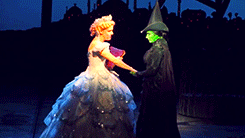Which came first, the chicken or the egg? Debate
Re: Which came first, the chicken or the egg? Debate
I feel that the chicken came first because God made all animals. I don't believe in evolution or anything like that.
- [x]
- Posts: 3835
- Joined: Sat Sep 01, 2012 3:44 pm
- My pets
- My items
- My wishlist
- My gallery
- My scenes
- My dressups
- Trade with me
Re: Which came first, the chicken or the egg? Debate
Egg. I'm an atheist and beleive in evolution, so I personally don't beleive in the procreation of chickens. So I beleive that through evolution, chickens were slowly created, and the first ones had to come from an egg. So therefore I beleive egg came first.
-

gold - Posts: 10968
- Joined: Tue Jan 05, 2010 10:42 am
- My pets
- My items
- My wishlist
- My gallery
- My scenes
- My dressups
- Trade with me
Re: Which came first, the chicken or the egg? Debate
Quick question. So, if two creatures made an egg in which the chicken came from, what about the OTHER chicken that would mate with the first chicken and make more. If the same two species that created the first chicken had an egg again, it wouldn't be a chicken anymore, would it?

-

Qiokkabee - Posts: 16086
- Joined: Sat Nov 26, 2011 2:55 pm
- My pets
- My items
- My wishlist
- My gallery
- My scenes
- My dressups
- Trade with me
Re: Which came first, the chicken or the egg? Debate
The Stalker wrote:Quick question. So, if two creatures made an egg in which the chicken came from, what about the OTHER chicken that would mate with the first chicken and make more. If the same two species that created the first chicken had an egg again, it wouldn't be a chicken anymore, would it?
The offspring evolves off what traits the parents may pass down. And there also might be a time where parents may have offspring with their children. You'd have to get a second answer, because I probably don't explain it well x3
-

smoochio - Posts: 3024
- Joined: Sat Aug 07, 2010 9:24 pm
- My pets
- My items
- My wishlist
- My gallery
- My scenes
- My dressups
- Trade with me
Re: Which came first, the chicken or the egg? Debate
The Stalker wrote:Quick question. So, if two creatures made an egg in which the chicken came from, what about the OTHER chicken that would mate with the first chicken and make more. If the same two species that created the first chicken had an egg again, it wouldn't be a chicken anymore, would it?
New species don't just pop up like that (at least not most of the time, there ARE cases where entire genomes are duplicated making the offspring unable to breed with the original species, and this is a COMMON method of getting new species in plants [because some species can self-pollinate so don't need an outside mate]).
Small changes occur. The animal that was the ancestor of the chicken would lay an egg, and the resulting chick might have a very small mutation that would allow it to survive a little better. It would still be closely enough related to the rest of the species that it could interbreed with them no problem. However, some of its offspring might inherit that advantageous mutation, and it could slowly change the entire population. If the population is isolated from the rest of the species, it can eventually (over a very, very long time) evolve into a new species entirely. At that point, it might not even be able to mate with the original species.
I work with a type of fruit fly called Rhagoletis pomonella. It is a perfect example of evolution in action. Before apples were brought to the United States (no, they are not native), the fly fed only on Hawthorne fruits. Once apples arrived, some made the switch to apples. Interestingly enough, though they still interbreed to some extent, the two host races tend to stay apart for two main reasons:
1. The fruits ripen at different times, so the new flies emerge when the fruits are ripe. The ones that come from apple lines emerge when apples are ripe no matter what fruit they are actually raised on (showing it is genetic, not environmental). The ones that come from Hawthorn lines emerge when Hawthorn fruits are ripe.
2. These flies mate on the fruit of their host plant, so they have to be able to get to the fruit in order to have reproductive success. They use the scent of the fruits to find the host plant, mate, and lay their eggs on the fruit. In studies, apple flies prefer apple odors to hawthorn fruit odors, even if they are raised on hawthorn. The reverse is also true. Again, this shows a distinct genetic difference. Hybrids (crosses) between the two types result in offspring that poorly navigate to either fruit odor, but they have much lower success at getting to either fruit than the pure lines. Therefore, lower reproductive success, and natural selection is in action.
In fact, there is debate as to whether or not they can even be still considered the same species. Because hybridization is relatively low (and different species do still sometimes hybridize in the wild, like red wolves and coyotes, domestic dogs and coyotes, etc.), some scientists consider them two different species. Either way, it is a very clear example of how natural selection can impose distinct genetic changes to create new species.
In this particular case, they appear to be undergoing the process of forming new species without a geographical barrier like an island or a body of water separating the two populations. This is a process called sympatric speciation.
████████████████████████████████████████████████████

───────────────────────────────────────────────────
████████████████████████████████████████████████████
─────────────────────────────────────────────────────────────────────────────────────────────
───────────────────────────────────────────────────
🔥│🔥│🔥│🔥│🔥│🔥│🔥│🔥
──────────────

──────────────
🔥│🔥│🔥│🔥│🔥│🔥│🔥│🔥
──────────────
───────────────────────────────────────────────────
───────────────────────────────────────────────────── b i o l o g i s t ★ a d u l t ★ p a n ★ t h e y / t h e m
████████████████████████████████████████████████████
-

עורב לבן - Posts: 5070
- Joined: Fri Dec 11, 2009 2:37 am
- My pets
- My items
- My wishlist
- My gallery
- My scenes
- My dressups
- Trade with me
-

Jimmy Neutron - Posts: 1614
- Joined: Sat Oct 27, 2012 1:12 pm
- My pets
- My items
- My wishlist
- My gallery
- My scenes
- My dressups
- Trade with me
Re: Which came first, the chicken or the egg? Debate
Well, the chicken came first according to the Oxford Dictionary ;D
But in seriousness I think the chicken came first.
But in seriousness I think the chicken came first.


hey my name is spencer. i like robots. he/him pronouns.
-

Koujaku; - Posts: 4382
- Joined: Thu May 03, 2012 10:04 am
- My pets
- My items
- My wishlist
- My gallery
- My scenes
- My dressups
- Trade with me
-

Wicked Witch - Posts: 1822
- Joined: Mon Oct 18, 2010 6:26 am
- My pets
- My items
- My wishlist
- My gallery
- My scenes
- My dressups
- Trade with me
Re: Which came first, the chicken or the egg? Debate
So what was there before the Big Bang, eh? What caused it?


hey my name is spencer. i like robots. he/him pronouns.
-

Koujaku; - Posts: 4382
- Joined: Thu May 03, 2012 10:04 am
- My pets
- My items
- My wishlist
- My gallery
- My scenes
- My dressups
- Trade with me
Re: Which came first, the chicken or the egg? Debate
WaitingForTheBox wrote:So what was there before the Big Bang, eh? What caused it?
The Big Bang theory is the prevailing cosmological model that describes the early development of the Universe.[1] According to the theory, the Big Bang occurred approximately 13.798 ± 0.037 billion years ago,[2][3][4][5][6][7] which is thus considered the age of the universe.[8][9][10][11] After this time, the Universe was in an extremely hot and dense state and began expanding rapidly. After the initial expansion, the Universe cooled sufficiently to allow energy to be converted into various subatomic particles, including protons, neutrons, and electrons. Though simple atomic nuclei could have formed quickly, thousands of years were needed before the appearance of the first electrically neutral atoms. The first element produced was hydrogen, along with traces of helium and lithium. Giant clouds of these primordial elements later coalesced through gravity to form stars and galaxies, and the heavier elements were synthesized either within stars or during supernovae.
Straight from google, lol. It was just space, vast, vast space
-

smoochio - Posts: 3024
- Joined: Sat Aug 07, 2010 9:24 pm
- My pets
- My items
- My wishlist
- My gallery
- My scenes
- My dressups
- Trade with me





